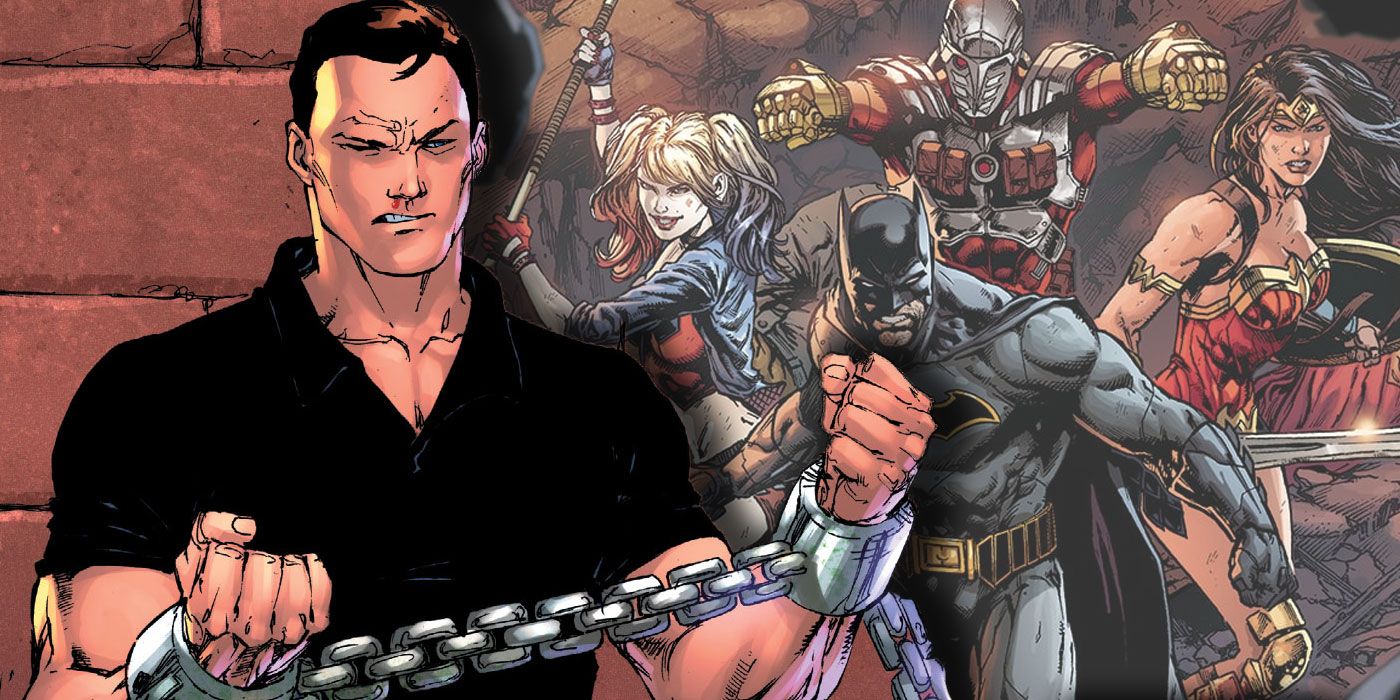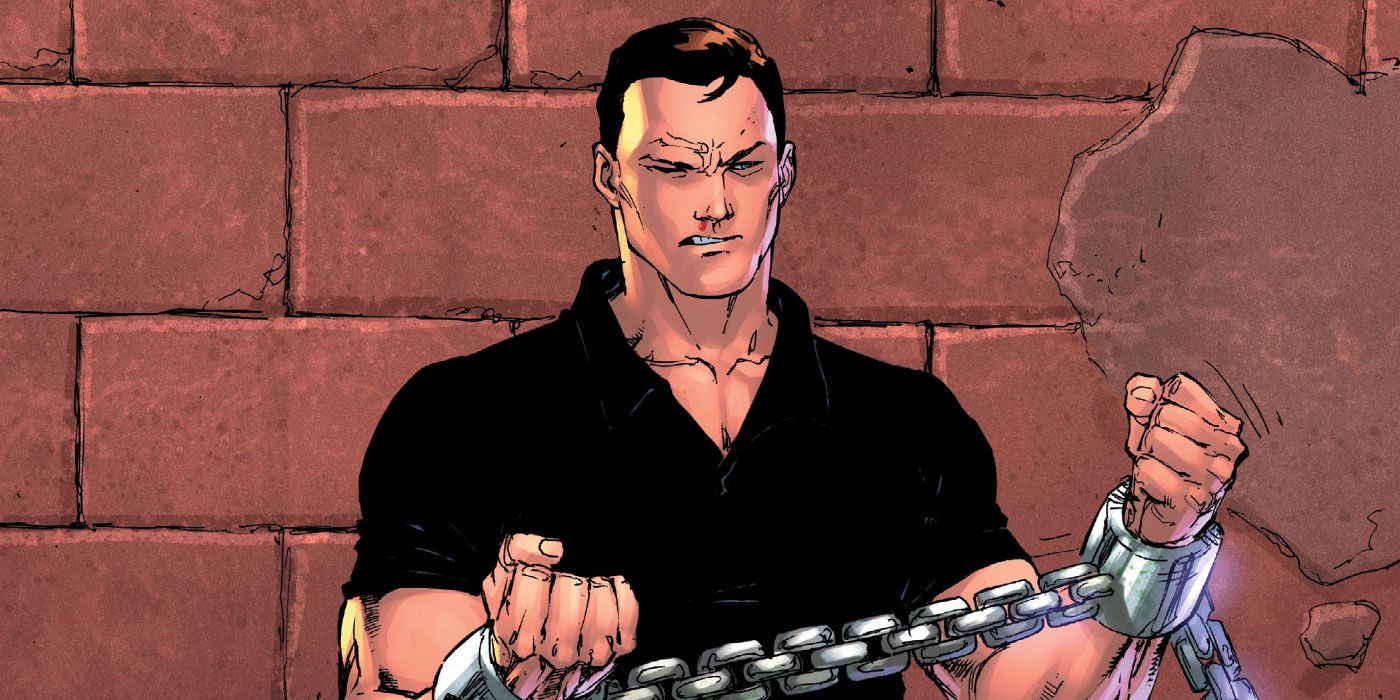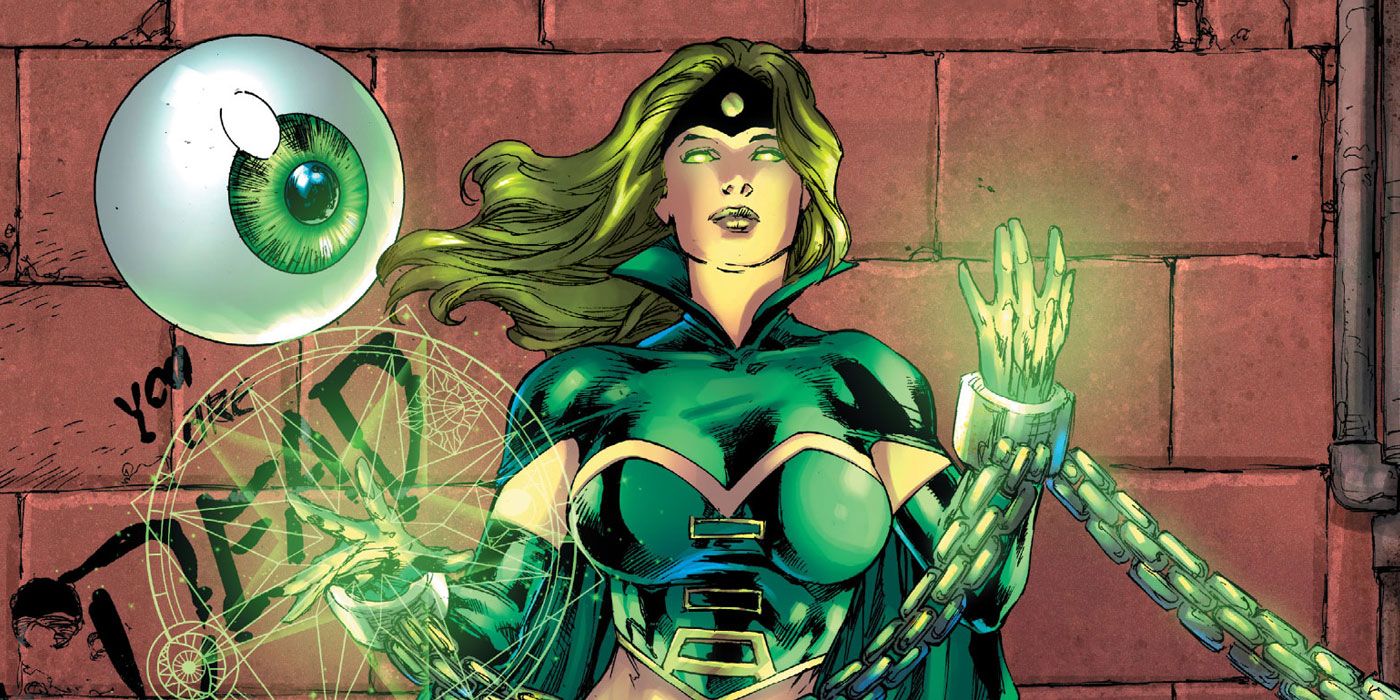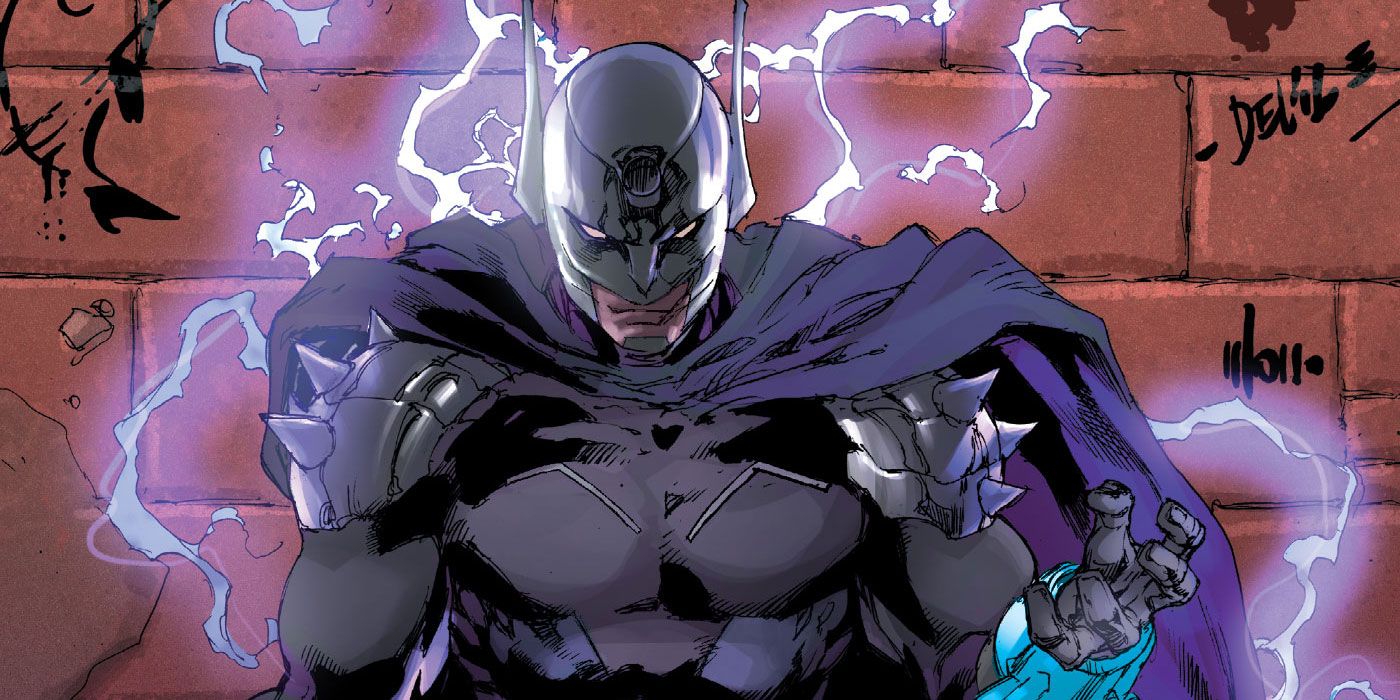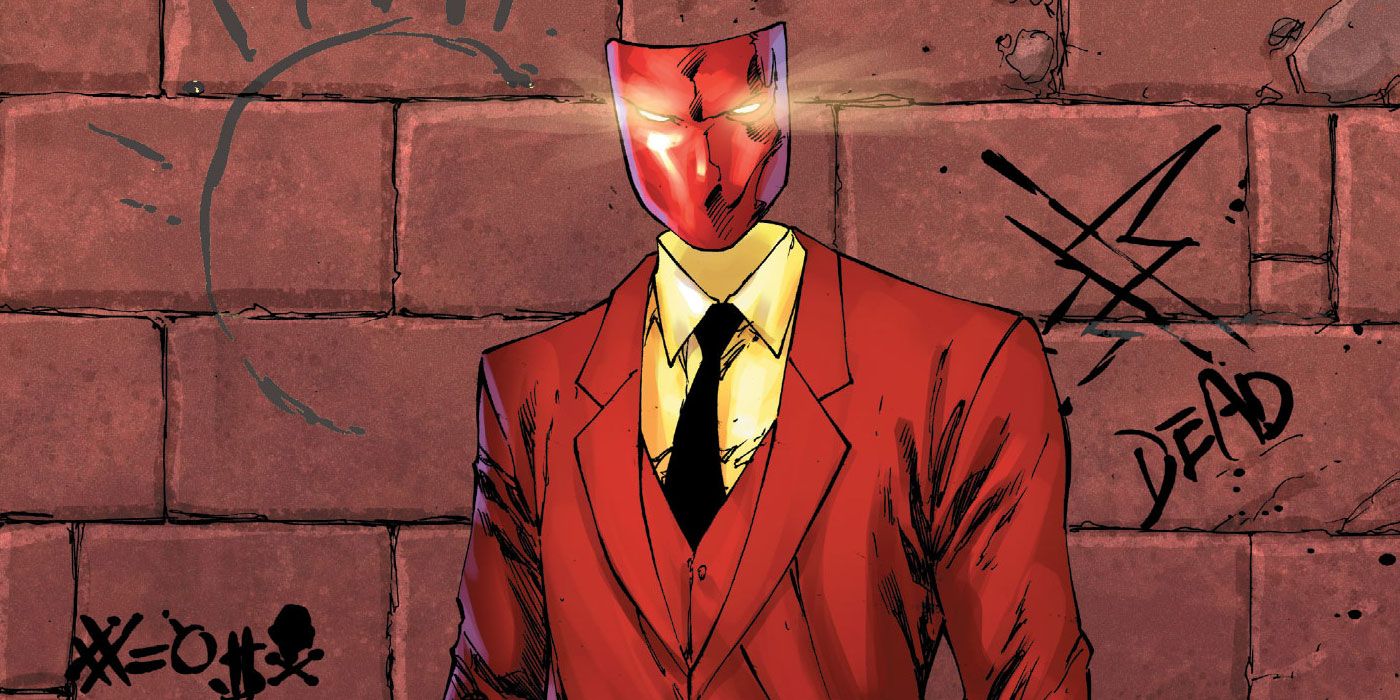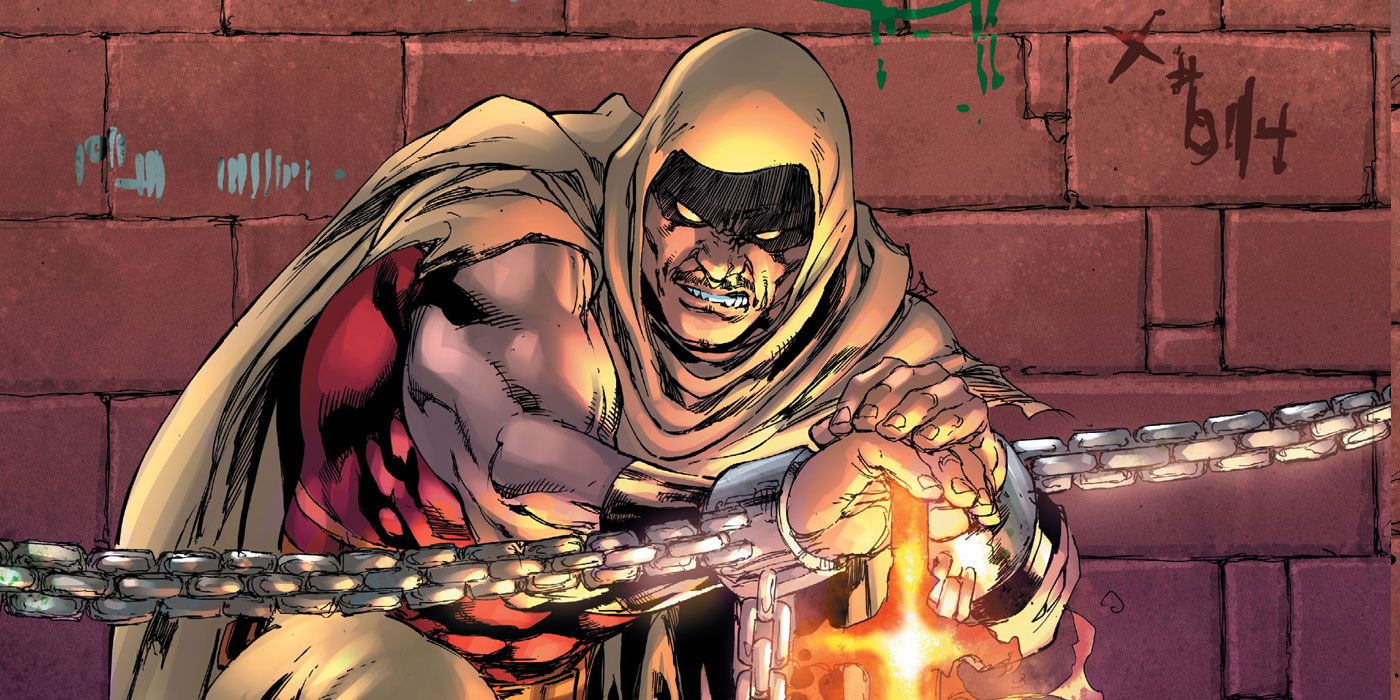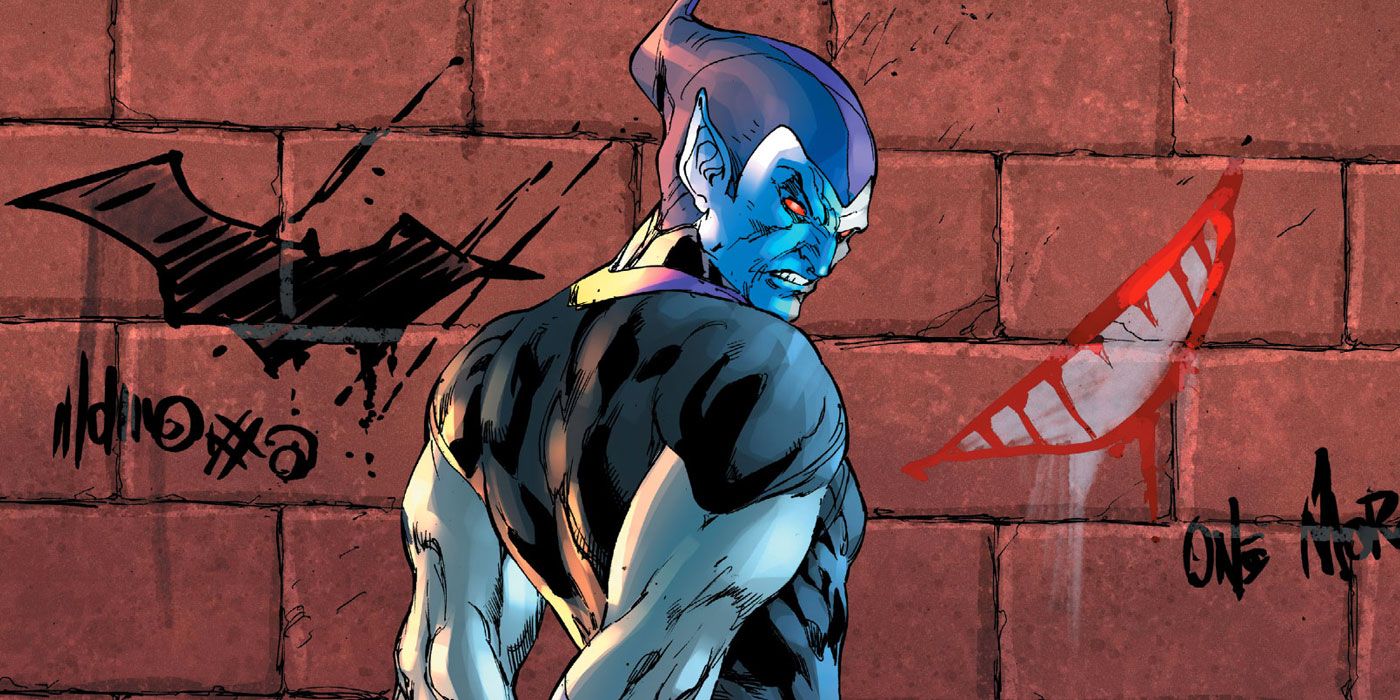"Justice League vs. Suicide Squad," the first major crossover of DC Comics' Rebirth era, is nearly upon us, and with it comes a new super-team.
In addition to Task Force X throwing down with the DC Universe's premier superhero team, the event will find Maxwell Lord gathering the nastiest villains he can find to make his power play -- whatever it may be -- while all eyes are on the super-powered skirmish. And although he was one of the League's biggest boosters once upon a time, that was years, and a reality, ago. This Max Lord no longer has those ties, and as such, is probably the deadliest readers have ever seen him.
RELATED: [SPOILER] Joins Max Lord’s Team in Justice League vs. Suicide Squad
But even the most conniving character this side of Amanda Waller needs some back-up when tackling the world's two most powerful teams of heroes and villains. With that in mind, we take a look at the crew Lord assembles, breaking down who they are and why the Justice League and Suicide Squad should be concerned when they make their presence felt.
MAXWELL LORD
Introduced as the Justice League's biggest fan/mysterious benefactor, Maxwell Lord soon became the group's government liaison, forging a deal to create the Justice League International. Of course, nobody realized he possessed mild mind-control powers gained during the Dominators' failed invasion of Earth, allowing him to subtly "push" people into doing what he wanted. The revelation of his abilities raised some alarm bells with the League, but Max primarily used his powers for good, so they more or less forgave him.
Lord eventually died from a brain tumor (presumably linked to his abilities; whenever he used his powers, he would get a slight nosebleed), was "resurrected" as a cyborg, and from there proceeded to secretly turn on the heroes he once called friends. His betrayal culminated in 2005's "Countdown to Infinite Crisis" one-shot, where Lord shot and killed Blue Beetle, aka Ted Kord. He quickly escalated his attempts to take over the world, utilizing Batman's satellite technology, known as Brother Eye, to infect individuals with nanotechnology that transformed them into mindless cyborgs (OMACs), and to exert mind control over heroes like Superman. Lord's machinations led to a fight with Wonder Woman, who snapped his neck.
He was eventually resurrected again as part of the Green Lantern-focused "Brightest Light" crossover. The reborn Lord picked up where he left off, using his powers to convince the superhuman community that Kord actually killed himself, and wiping his own existence from most memories. Eventually, the handful of heroes who remembered Lord's action, including Ted's best friend Booster Gold, the new Blue Beetle (Jaime Reyes) and Captain Atom took the fight to Lord. However, before the villain could be brought to justice, the reality-shifting Flashpoint hit, and the DCU was reborn as the New 52. The character has been seen only briefly as the leader of Checkmate, where he did battle with Brother Eye and the new O.M.A.C. Although ruthless, Lord's post-Flashpoint persona has not been one of a straight-up villain, although that appears to be on the cusp of changing in "Justice League vs. Suicide Squad."
LOBO
Lobo, aka the Main Man, is one of the most-feared and brutal bounty hunters in the universe. The chain-wearing, cigar-chomping, foul-mouthed bastich who killed off his entire race debuted in 1983 in "Omega Men." However, it wasn't until co-creator Keith Giffen added him to the cast of "L.E.G.I.O.N." in 1989 that the character took off in popularity.
Intended as an indictment of the violent excesses that epitomized many anti-eroes in the late-'80s and early '90s, Lobo instead became a fan-favorite, quickly headlining several miniseries as well as a popular ongoing title. Lobo, with his propensity for over-the-top violence, creative interstellar profanity, an insatiable appetite for beer and women, and an ego to match, became DC's answer to Marvel's "Wolverine Effect," wherein a series could expect a boost in sales from even the smallestcameo.
For a brief while, it appeared as though the rough-and-tumble space biker version of the character was gone for good. As part of the New 52 relaunch, the DC Universe met a new Lobo, one who may have been equally as violent as the original, but looked more like a cast member of "The Vampire Diaries" than "Sons of Anarchy." The new Lobo even hunted down what readers had previously thought was the real Lobo, decapitating and then frying the 'imposter' in the first three pages of his new series.
When "Justice League vs. Suicide Squad" arrives, the original-flavor Lobo will be along for the ride (whatever happened to the "Twilight"-style version remains to be seen). But while he's been revealed as part of Maxwell Lord's gang of ne'er do wells, we already know that a Justice League membership is in the Main Man's future. What role, then, does he play in the conflict, and will he eventually change sides due to an attack of morals? Or will the League simply make him a better offer?
EMERALD EMPRESS
One of the most dangerous criminals of the 31st century, the Emerald Empress has been a consistent and deadly thorn in the side of the Legion of Super-Heroes, no matter the incarnation of the massive super-team. It may be a bit surprising, then, to learn she got her start as the Empress, an ally to the LoSH who helped them defeat a Sun-Eater, before joining the Fatal Five and embarking on her career of galactic domination.
Despite generally cutting a swath of pain and misery across the galaxy of the future, the Empress has a fair bit of history in the 20th/21st century -- well, her Eye does, at least. In the late '80s and early '90s, the Eye was a force of evil in the ongoing "L.E.G.I.O.N." series, with the semi-sentient object of power creating stand-in Empresses in an effort to exert its will over the galaxy.
Eventually, it was revealed the Empress was more of a conduit for the Emerald Eye of Ekron's ambition, providing the orb a voice and physical body for its simple goals: to make everyone, everywhere, bow to its powers. At one time, the Eye was an actual eye, belonging to the cosmic being known as Ekron, who had powers not dissimilar to those of the Green Lantern Corps. It was stolen from Ekron by Lobo (!) during the course of DC's 2006 weekly event "52," essentially giving the Eye a secret origin rooted in the 21st century rather than the 31st.
This time around, it appears the Empress herself has traveled from the future to the present. DC Comics' flashcard for the character cites her name as Sarya, pegging her as the Rebirth version of the original Empress -- the one who first fought alongside the Legion before turning against them. Whether her origin, or that of the Eye of Ekron, remains intact is unknown, but we're sure to learn more in "Justice League vs. Suicide Squad" and possibly in Tom King's "Batman" series, which has teased an appearance by the Legion.
DOCTOR POLARIS
The short version is, Doctor Polaris is the DC Universe's answer to Magneto. The longer version is a bit more complicated and, well, longer.
Debuting in 1963, the first Doctor Polaris (aka Neal Emerson) was a Green Lantern foe created by John Broome and Gil Kane, the team that also gave us Hal Jordan. The magnetism-powered supervillain, whose abilities were gained from exposure to magnetic fields (hey, it was the '60s!), proved to be a worthy adversary for the ring-slinging hero, and plagued him for decades.
As it turned out, Doctor Polaris was the Mr. Hyde to Emerson's Dr. Jekyll. As a child, Emerson and his brother were abused by their father (or aunt, depending on the story), a situation that resulted in an evil aspect to his personality. Emerson buried that for years, but when he gained his powers and felt slighted by Green Lantern, whom he had turned to for help, the darkness took over, resulting in the costumed supervillain DC Comic fans came to know.
Green Lantern was his primary target through the years, but Polaris has also gone toe to toe with a number of other heroes, including Superman, Black Lightning and Aquaman. Although a new Doctor Polaris was introduced in 2007, the Rebirth-era Polaris is once again Emerson, split-personality due to childhood trauma and all.
JOHNNY SORROW
Debuting in 1999, Johnny Sorrow is the most recent creation on the team. However, he's more than made up for his relative newness by serving as a thorn in the side of the Justice Society of America time and again. In fact, his comic book history stretches back to 1940, where he was retroactively slotted into JSA continuity as a short-lived villain stuck in another dimension for decades. Upon his "return," Sorrow quickly established himself as a major villain, forming a new Injustice Society, killing a good number of the League of Assassins and bending a demon known as the King of Tears to his control.
Not a bad resume for a former silent movie actor whose career dried up when the talkies took over Hollywood.
Johnny Sorrow's powers are, really, pretty simple: If you see his face, you die. Hence, the mask, which appears to be floating in thin air. Sorrow also has the ability to teleport, levitate, manipulate energy and become intangible, although the latter power disappears when he takes off his mask.
In the pre-Flashpoint DC Universe, Johnny Sorrow's ultimate goal, and the motivation for pretty much everything he did, was to simply become human again. Now that he's being introduced in the Rebirth era, his motives are a mystery, but we do know the King of Tears maintains a major role in his creation. He's also apparently tied to the eventual return of the JSA, as Amanda Waller's dossier on the villain states, "He raves about heroes we've never heard of and gods returning."
RUSTAM
The least well-known member of Max Lord's crew, Rustam is far from an afterthought. Introduced in 1987 as part of John Ostrander and Luke McDonnell's original "Suicide Squad" series, Rustam was established as a foe to the government-controlled superhuman team. As such, it's little surprise he makes his Rebirth debut as an antagonist in a series co-starring Task Force X.
The leader of the super-powered terrorist cell known as the Jihad, Rustam is either Iranian or Iraqi, but makes his home in the fictional DC Comics country of Qurac. Named after the Persian god Rostam, he wields the Psi-Scimitar, a weapon capable of not only killing his opponents by immolation, but of opening inter-dimensional portals. The pre-Flashpoint version of the weapon was "semi-sentient," athough it remains to be seen if that carries through into the Rebirth era.
The original Rustam also holds the distinction of being the first to kill off a member of the Suicide Squad. During their initial encounter, he gunned down the illusion-casting villain known as Mindboggler while Captain Boomerang watched, opting not to intervene as vengeance for Mindboggler's "sin" of having embarrassed him earlier. As for whether a similar scene will play out in this incarnation of Rustam and the Squad's first encounter, we'll soon find out. However, you may want to keep in mind that "Justice League vs. Suicide Squad" writer Josh Williamson has said, someone will die during the course of the event.
ECLIPSO
And here we are, possibly the biggest gun in Max Lord's arsenal: Eclipso.
His first incarnation debuted in 1963, when scientist Bruce Gordon (yes, it's meant to be a play on BRUCE Wayne and Jim GORDON) transformed into the supervillain. While studying a solar eclipse, Gordon was attacked by a tribal sorcerer who wounded the scientist before falling to his death. From that point on, Gordon would physically change into Eclipso whenever a solar eclipse occurred, not unlike a werewolf's full moon cycle. While powerful, Eclipso was also relatively simple to defeat, as any sufficiently bright flash of light would cause him to retreat once more into Gordon's subconscious.
In the 1992 miniseries "Eclipso: The Darkness Within," the villain's origins were retconned, and his powers given a massive upgrade. It turns out Eclipso is actually a demon who was banished into a black diamond, aka the Heart of Darkness. Although his prison had long been shattered, Eclipso remained trapped until one of the shards wounded Bruce Gordon and allowed the demon to possess him. It was revealed over the course of "The Darkness Within" that Eclipso had been that powerful all along, able to control whomever had one of the thousand black diamond shards in their possession, but had opted to portray himself as a lower-level villain to avoid detection until the time was right for him to strike and take over the world.
Over the course of the miniseries, Eclipso traded hosts several times, and even possessed Lois Lane and Superman. The event spun into an "Eclipso" comic, which found the demon leaping from one host to another as Bruce Gordon hunted him down. The series closed with all the shards having been collected and re-formed into one diamond, and Eclipso once more taking up residence in Gordon's body.
It was later revealed that Eclipso was more than a mere demon; he was, at one point, the Wrath of God/Angel of Vengeance, a role currently filled by the Spectre. Following this news, Eclipso would return to plague the DC Universe on multiple occasions via a series of hosts, including the Atom's former wife Jean Loring and one of the purest superheroes of all time, Mary Marvel.
In the New 52 reality, where Rebirth is placed, Eclipso has been revealed to once again be a god of vengeance, trapped in the Heart of Darkness. This time, he also has ties to Gemworld, where he has the powers of the House of Onyx and House of Diamond. During a clash with John Constantine, Eclipso was defeated and once more imprisoned in the black diamond, where he has remained -- until Max Lord recruited him for his own purposes in "Justice League vs. Suicide Squad."

